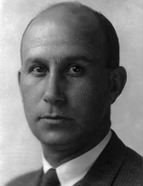

However, faced with the immediate demands of his teaching career at the University, the direction his scientific specialisation took led him to the areas of anatomy and anthropology, and he left to go on a study mission as a scholarship holder of the National Board of Education to France, Poland and Italy (1930-1931); he maintained his contractual relationship with the Faculty of Medicine of Porto where he was appointed, after public examination, Auxiliary Professor and where he founded the Maximiano Lemos Museum of the History of Medicine (1933). In addition to this, he was a teacher at the Regional School for Graduates [older boys] of the Mocidade Portuguesa in Porto (1937) and also taught a course offered by the city council that was open to the public called “Portuguese Studies” (1938), accumulating these activities with management of the Criminology Institute of Porto where he succeeded Pires de Lima as Director (1937).
A man with deep-rooted Catholic convictions, he welcomed the implantation of the Estado Novo in Portugal with conservative pleasure. He did not hesitate to join the União Nacional (National Union) nor from starting out on a political career when he won the nomination to become a member of the Consultative Committee of the regime’s political party. The consensus surrounding his academic and social prestige in the Porto area were decisive in his being chosen as a city councillor (1935), a deputy to the National Assembly for his constituency in two different legislatures (1938-1945), president of the administrative committee of the Porto Municipal Council (1945-1949) and procurador (representative) to the Câmara Corporativa (Corporative Chamber) (1945-1949), where he undertook parliamentary activities particularly in such areas as hygiene, medicine, education, social welfare and culture. Two examples serve to demonstrate his ideological alignment with the political model in power: his participation in many of the national commemorative programmes celebrating events in Portuguese history - he was the key organiser in Porto of the 5th Centenary of the Death of Infante D. Henrique (1960) - and his intransigent defence both political and religious of the Portuguese Colonial Empire. This was expressed in his numerous academic works on the Overseas Provinces and even in his discourse of a providentialist type of philosophy of history, inspired by Jacques Maritain, to justify the civilising mission of Portugal. On the civic side, throughout his life he held various different positions in the Ordem dos Médicos (Professional Order of Medical Practitioners), the Santa Casa da Misericórdia of Porto, the Portuguese Red Cross and the Porto Catholic Association as well as becoming a representative member of the Centre for Demographic Studies of the National Institute of Statistics, a member of the National Commission for the History of the Sciences and a member of the Board of Geographical Missions and Colonial Research.
